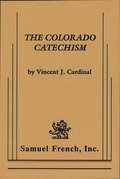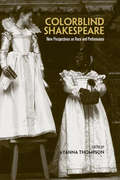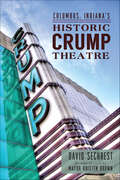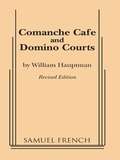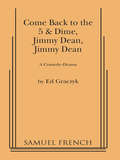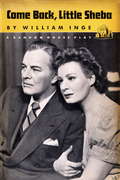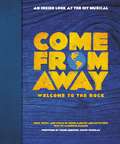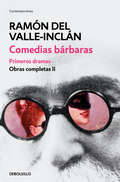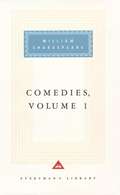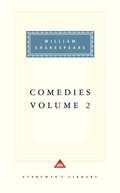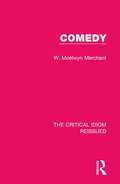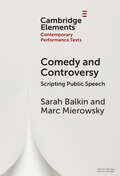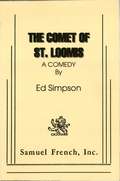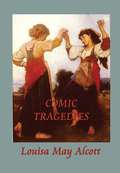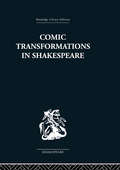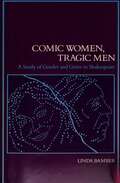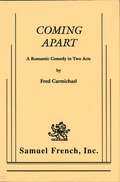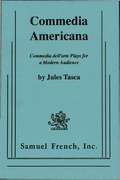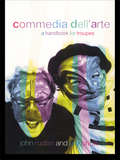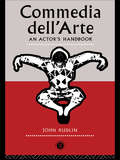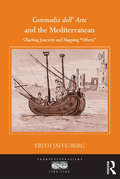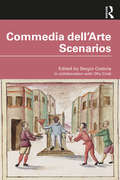- Table View
- List View
Color of Desire/Hurricane
by Nilo Cruz"The words of Nilo Cruz waft from the stage like a scented breeze. They sparkle and prickle and swirl, enveloping those who listen in both specific place and time . . . and in timeless passions that touch us all."--The Miami Herald One of the United States' most-produced Cuban American writers, Nilo Cruz employs his signature poetic imagery and vivid language to tender and humorous effect in this pair of his newest works. The Color of Desire, set in 1960 Havana, revolves around a passionate romance between an American businessman and an out-of-work Cuban actress. As the relationship becomes a metaphor for their countries' ruptured love affair, Cruz artfully weds magical realism to a familial story that is touching, harrowing, and funny. In Hurricane, a damaged family--a fire-and-brimstone missionary; his wife, who he saved in more than the spiritual sense; and their adopted son, who seems to have materialized from the ocean--face a shocking crisis when a hurricane ravages their Caribbean town. A celebration of humility, generosity, and kindness, Cruz's play explores the nature of identity, faith, and the redemptive power of love. Nilo Cruz is the author of the Pulitzer Prize-winning Anna in the Tropics, as well as A Park in Our House, A Bicycle Country, Dancing on Her Knees, Night Train to Bolina, Two Sisters and a Piano, and other works.
Colorado Catechism
by Vincent J. CardinalDramatic Comedy / 1m, 1f / Single Set / Ty Wain, played by Tim Daly in Los Angeles, is at the bottom of his life in a drug and alcohol rehabilitation center in Colorado. He meets Donna Sicard, a teacher in rehab for the third time; if she fails this round she may lose her child to foster care forever. They form a bond that helps them understand their situation and then realize that to overcome addiction, they must sacrifice their relationship. Three years later Ty is struggling to paint a portrait of Donna and, as he paints, he discovers the true nature of love.
Colorblind Shakespeare: New Perspectives on Race and Performance
by Ayanna ThompsonThe systematic practice of non-traditional or "colorblind" casting began with Joseph Papp's New York Shakespeare Festival in the 1950s. Although colorblind casting has been practiced for half a century now, it still inspires vehement controversy and debate.This collection of fourteen original essays explores both the production history of colorblind casting in cultural terms and the theoretical implications of this practice for reading Shakespeare in a contemporary context.
Colored Lights: Forty Years of Words and Music, Show Biz, Collaboration, and All That Jazz
by John Kander Fred EbbThe autobiography, in dialogue, of the composer and lyricist of Chicago and Cabaret as well as a wise and witty memoir of forty years of American musicals.Composer John Kander and lyricist Fred Ebb are the longest-running composer-lyricist team in Broadway history, having first joined forces in 1962. The fruits of their collaboration have helped to push American musical theater in a more daring direction both musically and dramatically. At the same time, their impact on individual performers—such as Liza Minelli, who has provided the introduction—has been substantial.Starting with Flora, The Red Menace, their first show together (as well as their first with Liza), and continuing with such groundbreaking works as Cabaret, Chicago, and Kiss of the Spider Woman, Kander and Ebb—ably assisted by Greg Lawrence—discuss their lives and careers with wit and acuity. In exploring the creation of truly original work such as Cabaret, reflecting on what makes a song work, reviewing what they liked (and didn’t like) about the film adaptation of Chicago, and discussing the mechanics of their own collaborative process, Kander and Ebb provide a history not only of their own lives but also of twentieth century American musical theater.Praise for Colored Lights“Anyone who enjoys musical theater will delight in this anecdotal memoir by an accomplished musical team who began their partnership in 1962. . . . Their recollections bring the golden age of musical theater to life and reveal the nuts and bolts of creating a score for a successful musical. The two reminisce freely about stars such as Liza Minnelli, Barbra Streisand and Bob Fosse, with whom they had close working relationships.” —Publishers Weekly
Columbus Indiana's Historic Crump Theatre (Landmarks)
by David SechrestNot since the construction of the Columbus courthouse had one man and his vision received as much publicity from local newspapers as John Crump and his theater, designed and built by architect Charles Sparrell in 1889. This is the story of the passion, struggles and triumphs that created the first true cultural arts center in this small town and the legacy that continues to inspire the community over a century later to protect this local landmark. It is a journey marked by first-class opera performances, flickering silent films, police intervention and arrests and, ultimately, decay and closure. A portion of the proceeds from sales of this book will go to the Heritage Fund in support of the Crump Theatre building--an architectural treasure in a city that boasts many.
Comanche Cafe or Domino Courts
by William HauptmanShort Plays, DramaScenery: Interiors. Comanche Cafe: 2 females. In the late 1930's outside the seedy "Comanche Cafe", two waitresses pass the time: the older, Mattie recalls a fling; Ronnie, a regretful virgin, plans a bright future... . Domino Courts: 2 males, 2 females. Four years later, at a tourist cabin in the Oklahoma dust bowl, Floyd (now married to waitress Ronnie) and Roy, former bank robbers and self-proclaimed "Hot Grease Boys", meet up for an ill-fated reunion. . "Haunting, terrifying, funny, beautiful."-Village Voice
Come Back to the 5 & Dime, Jimmy Dean, Jimmy Dean
by Ed GraczykDrama / Characters: 1 male, 8 femaleScenery: Interior. In a small town dime store in West Texas, the "Disciples of James Dean" gather for their twentieth reunion. Now middle-aged women, they were teenagers when Dean filmed Giant two decades ago in nearby Marfa. One of them, an extra in the film, has a child whom she says was conceived with Dean during the shoot. The ladies' congenial reminiscences mingle with flash backs to their youth; then the arrival of a stunning but familiar stranger sets off a series of confrontations that smash their delusions and expose bitter disappointments. . "Full of home spun humor [and] ... surefire comic gems."-NY Post . "Captures convincingly the atmosphere of the 1950s."-W.W.D..
Come Back, Little Sheba
by William IngeWilliam Inge's famous story of marital frustration which erupts in violence. Doc and Lola had an indiscreet affair, she became pregnant and, compelled to marry her, he gave up his medical studies, forfeited his future and settled down to a life of quiet desperation with the simple, homey Lola, who lost the child but has remained Doc's steadfast if slatternly wife. Now a chiropractor and recovering alcoholic, Doc's sobriety is tested when Marie, a young college student becomes their boarder bringing new life and long-dormant hostilities to the surface of Doc and Lola's troubled marriage.
Come From Away: An Inside Look at the Hit Musical
by David Hein Irene SankoffCome From Away: Welcome to the Rock - a fully illustrated companion volume to the hit Tony Award-winning Broadway musical, featuring the book and lyrics for the first time in print, backstage stories and the real history behind the show's events, character design sketches, and songs that ended up on the cutting room floor.The Tony Award-winning Broadway musical Come From Away tells the remarkable true story of a small town that welcomed the world. On September 11, 2001, 38 planes and 6,579 passengers were forced to land in the provincial town of Gander, Newfoundland. The local residents opened their arms to the displaced visitors, offering food, shelter, and friendship. In the days that followed, cultures clashed and nerves ran high, but uneasiness turned into trust, music soared into the night, and gratitude grew into enduring friendships. Come From Away: Welcome to the Rock is the ultimate companion piece to Irene Sankoff and David Hein's smash-hit musical based on that extraordinary experience. Featuring the complete book and lyrics for the first time in print, a foreword by Canadian Prime Minister Justin Trudeau, and exclusive photos of the company and physical production, this essential companion also includes original interviews with passengers, Gander residents, and the actors who portray them. The narrative by theater historian Laurence Maslon details the events of that memorable and challenging week and also traces the musical's development from the ten-year reunion of residents and airline passengers in Gander, where the idea for the musical was born , to the global phenomenon it is today. Come From Away: Welcome to the Rock gives an unprecedented look behind the curtain and demonstrates why the story has touched so many so deeply: Because we come from everywhere, we all come from away.
Comedias bárbaras. Primeros dramas (Obras completas Valle-Inclán #2)
by Ramón del Valle-InclánEl primer volumen con la producción teatral de uno de los autores más destacados de la España contemporánea: Ramón María del Valle-Inclán. Apenas concluido el ciclo narrativo de las Sonatas, en 1905, Valle-Inclán emprende una espectacular trayectoria como dramaturgo, situándose en poco tiempo a la vanguardia del teatro español de la época. En 1907 se estrena Águila de blasón, la primera de las tres «Comedias bárbaras», escritas bajo el impacto que en Valle-Inclán supuso la lectura de Shakespeare. El enfrentamiento de Don Juan Manuel de Montenegro con sus hijos lleva al sórdido escenario de la Galicia rural los ecos de El rey Lear. Y en la misma línea de lo que se ha dado en llamar el «teatro bárbaro» del autor, descuella Divinas palabras (1920), considerada por muchos como una de las obras mayores del teatro del siglo XX. Reseñas:«Con las Comedias bárbaras y Divinas palabras, Valle-Inclán dota al teatro español, tan flaco y débil, de una dimensión trágica que antes no tuvo.»Luis Cernuda «Valle-Inclán, el gran renovador del teatro español del siglo XX.»Ramón Irigoyen, El País «DeBolsillo pondrá el 16 de febrero en las librerías los dos primeros tomos de sus obras completas, que incluirán, respectivamente, las primeras narraciones y los primeros dramas, donde Valle-Inclán se consolida como el escritor modernista de referencia en la lengua española.»H. J. Porto, La Voz de Galicia
Comedies
by William ShakespeareShakespeare forged his tremendous art in the crucible of his comic imagination, which throughout his life enveloped and contained his tragic one. His early comedies, with their baroque poetic exuberance, intense theatricality, explosive bursts of humor, and superbly concrete realizations of the dialects of love, capture as in a chrysalis all that he was to become. They provide a complete inventory of the mind of our greatest writer in the middle of his golden youth. This volume contains The Comedy of Errors, The Taming of the Shrew, The Two Gentlemen of Verona, Love's Labor's Lost, A Midsummer Night's Dream, and its companion piece, Romeo and Juliet, which Tony Tanner describes in his introduction as "a tragedy by less than one minute." The texts, authoritatively edited by Sylvan Barnet, are supplemented with textual notes, bibliographies, a detailed chronology of Shakespeare's life and times, and a substantial introduction in which Tanner discusses each play individually and in the context of Shakespeare's oeuvre.
Comedies, Volume 2
by William ShakespeareShakespeare's later comedies were written at the astonishing pace of about two plays a year. In them, he moves beyond the farce of his earlier comedies to richer and more varied dramas. These range from the famous "problem plays," which blend humor with tragedy, to the idyllic romances set in such timeless locales as the Forest of Arden. They contain some of his wittiest and most memorable characters, from cross-dressing heroines, bantering lovers, and wisecracking fools to the villainous but sympathetic Shylock and the boisterous and bawdy Falstaff. This volume contains The Merchant of Venice, The Merry Wives of Windsor, Much Ado About Nothing, As You Like It, Twelfth Night, All's Well That Ends Well, and Measure for Measure. The authoritatively edited text of the plays is supplemented with footnotes, bibliographies, a detailed chronology of Shakespeare's life and times, and a substantial introduction in which Tony Tanner discusses each play individually and in the context of Shakespeare's work.
Comedy (The Critical Idiom Reissued #20)
by Moelwyn MerchantFirst published in 1972, this work pursues the question ‘what is comedy?’ In its quest for an answer it explores critical theory, psychology, sociology and metaphysics. It also examines the classical origins of comedy, different kinds of comedy, the rituals of comedy, its relationship with other idioms such as ‘satire’, irony’ and ‘farce’, and compares two major traditions: ‘Aristophanic’ and ‘Shakesperean’ comedy. In doing so, the book demonstrates the indefinable and flexible nature of comedy. This work will be a valuable resource to those studying drama, and in particular, those focusing on classical and Shakespearean plays.
Comedy and Controversy: Scripting Public Speech (Elements in Contemporary Performance Texts)
by Sarah Balkin Marc MierowskyThis is an Element book about stand-up comedy and public speech. It focuses on the controversies generated when the distinction between the two breaks down, when stand-up enters – or is pushed – into the public sphere and is interpreted according to the scripts that govern popular political and media rhetoric rather than the traditional generic conventions of comic performance. These controversies raise a larger set of questions about the comedian's public role. They draw attention to the intention of jokes and their effects in the world. And they force us to consider how the limits of comic performance – what can be said, by whom, and why – respond to, and can reshape, public discourse across changing media contexts.
Comet of St. Loomis
by Ed SimpsonComedy / 4m, 2f / Exterior / It's a pleasant summer evening at the Throckmorton Ridge Motor Court and owner Charlie Loomis is planning a romantic evening of comet gazing with his ex girlfriend Trudy. The comet Akashi is due to make a rare and mystical appearance in the night sky. Charlie, a decent but lonely man, finds his patience and good humor strained to the limits as his plans are continually disrupted by people seeking help. Annie, the court's teenaged maid, wants advice and reassurance as she awaits the imminent arrival of her baby. Her video game addict of an air headed husband is so freaked by the approaching birth that he has developed a disturbing inability to speak to her. Instead, he converses with the unborn child. Martin Gray, the neurotic honorary mayor, is upset because his town is teetering on the brink of insolvency. For some strange reason, he is sure that Loomis can save it. An increasingly frazzled Loomis is then confronted by a stranger from out of town. Jack Miles is everything Loomis isn't suave, handsome, successful and cynical. It develops that he went to high school with Loomis, and he proceeds to regale everyone with tales of Loomis' hapless school career as the butt of countless pranks and cruel jokes. In fact, Jack has been searching for Loomis. Jack's revelations, interrupted by the onset of Annie's labor, force Jack and Loomis to confront their shared past and uncertain future in this gently comic play about survival during hard times.
Comic Acting and Portraiture in Late-Georgian and Regency England
by Jim DavisThe popularity of the comic performers of late-Georgian and Regency England and their frequent depiction in portraits, caricatures and prints is beyond dispute, yet until now little has been written on the subject. In this unique study Jim Davis considers the representation of English low comic actors, such as Joseph Munden, John Liston, Charles Mathews and John Emery, in the visual arts of the period, the ways in which such representations became part of the visual culture of their time, and the impact of visual representation and art theory on prose descriptions of comic actors. Davis reveals how many of the actors discussed also exhibited or collected paintings and used painterly techniques to evoke the world around them. Drawing particularly on the influence of Hogarth and Wilkie, he goes on to examine portraiture as critique and what the actors themselves represented in terms of notions of national and regional identity.
Comic Tragedies
by Louisa May AlcottFans of Louisa May Alcott's Little Women will remember the elaborate plays which the March sisters loved to perform. This volume, published after Alcott's death, is a compilation of the real plays written by her and her sisters, which were fictionalized in Little Women.
Comic Transformations in Shakespeare
by Ruth NevoFirst published in 1980. In this study of Shakespeare's ten early comedies, from The Comedy of Errors to Twelfth Night, the concept of a dynamic of comic form is developed; the Falstaff plays are seen as a watershed, and the emergence of new comic protagonists - the resourceful, anti-romantic romantic heroine and the Fool - as the summit of the achievement. The plays are explored from three complementary perspectives - theoretical, developmental and interpretative which lead to a further understanding of the powerful relation between the plays' formal complexity and their naturalistic verisimilitude.
Comic Women, Tragic Men: A Study of Gender and Genre in Shakespeare
by Linda BamberThis book proceeds from the assumption that Shakespeare, so often perceived as the one writer who appears to have transcended the limits of gender, inevitably writes from the perspective of his own gender. From this perspective, whatever represents the Self is necessarily male; and the Other, which challenges the Self, is female. The author's approach gives us a fresh understanding of both Shakespeare's characters and the structure of the plays. The author defines genre in terms of the nature of the challenge offered by the Other to the Self. Using specific plays and characters of Shakespeare, the author shows how in tragedy the Other betrays or appears to betray the Self; in comedy the Other evades the social hierarchies dominated by versions of the male Self; in romance the Other comes and goes, leaving the Self bereft when she is gone and astounding him with happiness when she reappears. History is defined as a genre in which the masculine heroes confront no challenge from the Other but only from each other, from other versions of the Self. The book consists of a long theoretical introduction followed by chapters on comedy, history, and some individual plays: Hamlet, Antony and Cleopatra, Macbeth, Coriolanus, and The Tempest.
Coming Apart
by Fred CarmichaelRomantic Comedy / 2m, 2f / Interior / From the author of Exit the Body and Out of Sight . . . Out of Murder comes a funny, refreshing and delightful romantic comedy which opens with the Kittridges saying simultaneously, "I want a divorce!" Both are conceited and rightly so: Colin is a successful humor columnist and Frances an equally successful romance novelist. There is rivalry between them and although they are still in love, each is too stubborn to give an inch. Stage right features an area into which they wander to play other scenes and other times. Here hilarious differences emerge as each remembers a different version of their meeting and the marriage proposal and each pictures a different future. They confide in Sylvia, their mutual agent, and in Bert, a financier who hears Colin's troubles at the club. The Kittridges played matchmaker for this couple whose help only complicates matters. Frances and Colin's attempts to divide their belongings as they continue to live in the same apartment for a six month waiting period are paralleled in a book Frances is writing called 'How to Survive a Marriage'. Startling revelations bring about a warm and mirthful happy ending.
Commedia Americana
by Jules TascaComedy / 6m, 4f, doubling possible / Six lusty commedia dell'art plays bring traditional characters like Harlequin, Pantalone and Punch into modern times. The seven deadly sins come to life with loads of laughs and audience participation. "Women gasped. Men guffawed. Children squealed and pointed. It was great!"-- Valley Review. See Index under individual titles for descriptions: Love Bite, Cupidosis, False Prophets, Peeping Punch, The Marriage of Don Juan and Pantalone's Dream.
Commedia Dell'Arte: A Handbook for Troupes
by John Rudlin Oliver CrickA companion to John Rudlin's best-selling Commedia dell'Arte: A Handbook for Actors, this book covers both the history and professional practice of commedia dell'arte companies from 1568 to the present day. Indispensable for both the beginner and the professional, it contains historical and contemporary company case histories, details on company organisation, and tips on practical stagecraft. Essential for students and practitioners, this book enables the reader to understand how successful commedia dell'arte companies function, and how we can learn from past and current practice to create a lively and dynamic form of theatre. Includes tips on: * writing a scenario * mask-making * building a stage * designing a backdrop * costume * music. _
Commedia Dell'arte An Actor's Handbook: An Actor's Handbook
by John RudlinThere has been an enormous revival of interest in Commedia dell'arte. And it remians a central part of many drama school courses. In Commedia dell'arte in the Twentieth Century John Rublin first examines the orgins of this vital theatrical form and charts its recent revival through the work of companies like Tag, Theatre de Complicite and the influential methods of Jacques Lecoq. The second part of the book provides a unique practical guide for would-be practitioners: demonstrating how to approach the roles of Zanni, Arlecchion, Brighella, Pantalone, Dottore, and the Lovers in terms of movement, mask-work and voice. As well as offering a range of lazzi or comic business, improvisation exercises, sample monologues, and dialogues. No other book so clearly outlines the specific culture of Commedia or provides such a practical guide to its techniques. This immensely timely and useful handbook will be an essential purchase for all actors, students, and teachers.
Commedia dell' Arte and the Mediterranean: Charting Journeys and Mapping 'Others' (Transculturalisms, 1400-1700)
by Erith Jaffe-BergDrawing on published collections and also manuscripts from Mantuan archives, Commedia dell' arte and the Mediterranean locates commedia dell' arte as a performance form reflective of its cultural crucible in the Mediterranean. The study provides a broad perspective on commedia dell’ arte as an expression of the various cultural, gender and language communities in Italy during the early-modern period, and explores the ways in which the art form offers a platform for reflection on power and cultural exchange. While highlighting the prevalence of Mediterranean crossings in the scenarios of commedia dell' arte, this book examines the way in which actors embodied characters from across the wider Mediterranean region. The presence of Mediterranean minority groups such as Arabs, Armenians, Jews and Turks within commedia dell' arte is marked on stage and 'backstage' where they were collaborators in the creative process. In addition, gendered performances by the first female actors participated in 'staging' the Mediterranean by using the female body as a canvas for cartographical imaginings. By focusing attention on the various communities involved in the making of theatre, a central preoccupation of the book is to question the dynamics of 'exchange' as it materialized within a spectrum inclusive of both cultural collaboration but also of taxation and coercion.
Commedia dell'Arte Scenarios
by Olly Crick Sergio CostolaCommedia dell'Arte Scenarios gathers together a collection of scenarios from some of the most important Commedia dell'Arte manuscripts, many of which have never been published in English before. Each script is accompanied by an editorial commentary that sets out its historical context and the backstory of its composition and dramaturgical strategies, as well as scene summaries, and character and properties lists. These supplementary materials not only create a comprehensive picture of each script’s performance methods but also offer a blueprint for readers looking to perform the scenarios as part of their own study or professional practice. This collection offers scholars, performers and students a wealth of original performance texts that brig to life one of the most foundational performance genres in world theatre.

